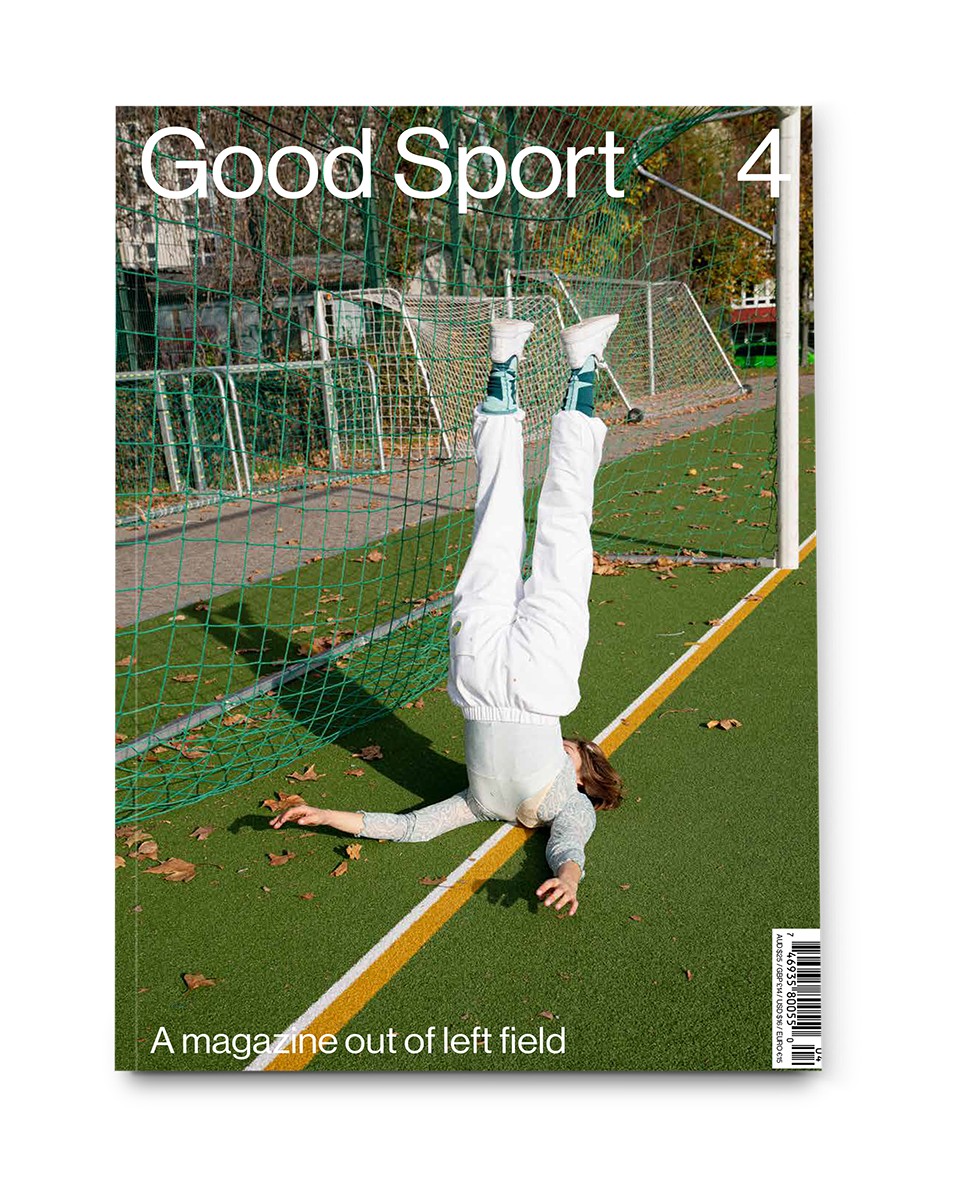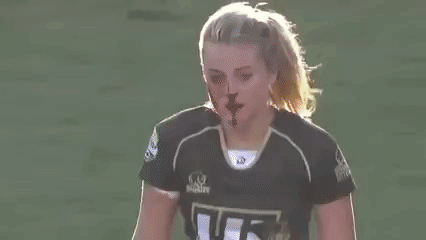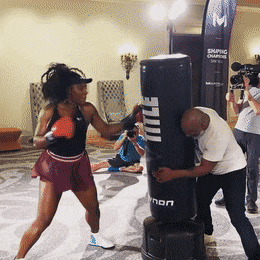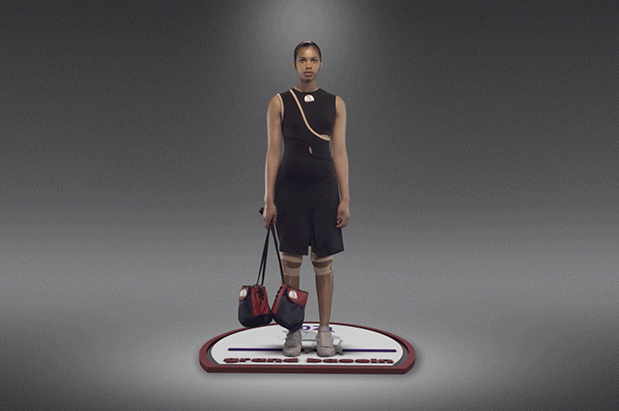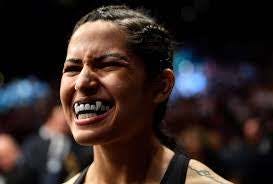Good Sport Magazine Newsletter: The speaking up edition.
With Margot Charbonnier of Berlin based label Sample-cm.
Margot Charbonnier is the director and head designer of the Berlin-based label "Sample-cm" founded in 2015. She graduated in social sciences in France and in fashion from Central Saint Martins London, she has been since then exploring sport and fashion practices into the mainline of her label: the "Grand Bassin" collections.
Each season of "Grand Bassin" is developed around a specific sport aesthetic stretched to the limits of its cultural space.
Margot and Sample-CM have been friends of Good Sport since we crossed paths a few years ago. What Margot does with her label embodies a lot of what we enjoy about our approach and thinking to the magazine. We were lucky enough to visit Margot in Berlin in 2019 to interview her for our cover feature in Good Sport Issue 04.
Margot Charbonnier
Thanking the “Good Sport” team for the amazing chance to invest this space today and to make you hear my voice, it also resonates deeply with my recent questioning about the necessities to speak out, to take space, to deploy our bodies on the sport fields and in the fashion industry as women.
I consider myself as much as a casual sport practitioner as a passionate sport amateur. From the outset I have been fascinated by sport rituals, sometimes a compulsive buyer of sport gear, often stunned by how amazing role models athletes could be and always intrigued by how revealing of our societies sport performances and institutions are...
Lets embrace this newsletter as a humble attempt to address the gendered nature of spaces, to highlight the diverse inequalities in sport and in fashion and to embrace the disruptive effects of women physical demonstration or combative statement.
Let’s take over this space then, push off the field and let’s be physical!
Pattern creation following the paths of 6 female martial arts fighters to create the GB2021-CLUB scarves.
Sports are still activities in which boys and men are more actively and enthusiastically encouraged to participate, compared with girls and women. One can be explained by the lack of representation, less than 10% of the broadcasting time is dedicated to women's sport, they are in important minority in leading positions, federation, training staff or sport reporting. Girls are less likely to see women sport on television and thus less encouraged to see female players as potential role models (or mostly through a plastic or people perspective in tennis or ice skating for instance). We can also explain it by the lack of financing, huge difference of sponsoring, way fewer opportunities to make a living out of sport practice for women, huge difference in the condition of retirement and thus less time to invest in the sport practice itself.
Furthermore, there are also pronounced gendered sport spaces and deep differences in the bodies socialisation between boys and girls. Bodies are particularly malleable matters to be disciplined, where this discipline will legitimize the rest of the practices including access to some specific sports and legitimacy in some specific sport spaces. Boys from very early ages are way more encouraged to take space, speak loud, make the experience of their body deployed, of their physical capacities to act...Where girls on the other hand are oriented towards more static activities, with retracted and more controlled bodies. Early at school they often occupy the edges of a schoolyard. Girls are not trained, used, supported either than validated and legitimized to occupy actively the space, to use violent speeches, to attract attention or perform power. At least their experience of strength or their expertise to endure is not coded as such codes of power.
To train our bodies, to invest in a space reserved to men like a boxing gym, to perform in public, to employ men’s vocabulary or dress in men’s outfits, have been seminal ways to resist and to access autonomy and equality. In that way, we can consider certain practices as boxing as intrinsically political for women. Boxing and Feminism share the ability to recognize strength, to unleash physical capacity, to speak up, put our bodies into action and where we are not expected.
Female boxers express feeling pressured to incorporate men’s codes and masculine body language as conditions to be respected as professional athletes on the ring, where they are at the same time feeling pressured to perform over femininity in their daily life to fight back the stigmatization as a tomboy or lesbian. The demonstrative anger of Serena Williams has been particularly disruptive for sport media. Her anger has been several times penalized and characterized as aggressiveness without being analyzed by the federation from the gendered or racial perspectives of the 'angry black women' stereotypical. It can be seen as a common strategy to put back women (and further here black women) into their expected passive attitude, to pathologized women's anger or frustration and in the same way, minimize the report of injustice.
To invest these spaces defined as masculine generate intense embarrassment and deep fright. As when different worlds confront and mix or even worth compete. Attempts to bring things back to their right places seems to be the logical and immediate response to what's would be characterized as a risk or a problem to fix.
Therefore, these new spaces are “site of struggle, resistance and negotiation, as well as one of potential liberation, freedom and transformation. It is inherently political, for it is in (and through) space that relations of power are resisted, negotiated, fought and overcome.” ** These disruptive forces have been used as opportunities to question, raise awareness and bring together as well as these legitimate anger emotions could be used as positive and constructive forces to perform, create and support changes.
As a women designer from a working-class background, I have been evolving in an industry, embracing high social reproduction and widely male-dominated with a creator figure still deeply fantasized as a male creator figure. As female boxing still lacks role models, fashion does as well. Exploring boxing in my last collection has been using a traditional and often fantasized tool of social mobility. Speaking up at a more personal level and occupying an unexpected space of political statement, have been attempts to suggest change via embarrassment and dialogue and hopefully take an active part to the rewriting of the complex feminine identity which involves amongst other the design of their clothing and the activities women are endorsed to perform.
References:
https://www.cairn.info/revue-agora-debats-jeunesses-2011-3-page-93.htm
https://www.theguardian.com/sport/blog/2018/nov/08/womens-boxing-television-deals
Good Sport, A magazine out of left field. This newsletter is an extension of our thinking and a way our friends and people we’re connected to can speak freely about topics and ideas they are interested in. If you’ve enjoyed this edition, please consider forwarding it to a friend. If you’re reading it for the first time, consider subscribing (it’s free).




